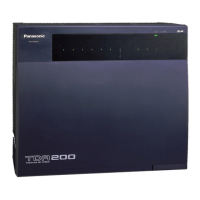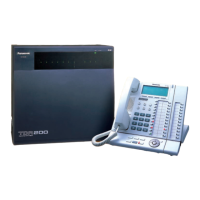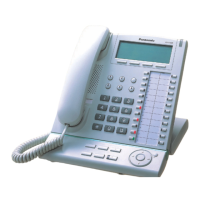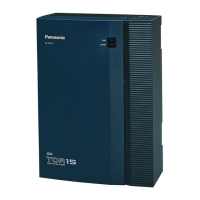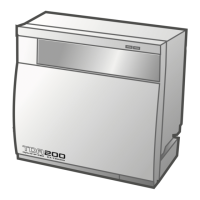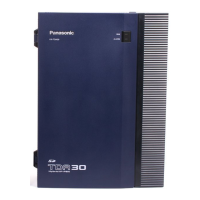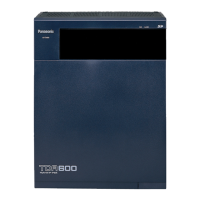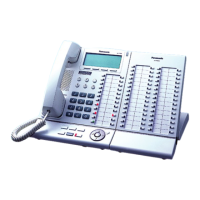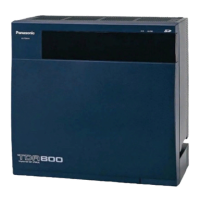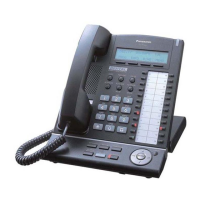Extension 201 does not answer the trunk call, so the call is forwarded to the VPS, and answered by mailbox
201. If the outside caller leaves a message, the VPS sends a Message Waiting notification to the extension
using Enhanced QSIG information over the private network.
When forwarding the call, PBX-2 sends any received call information (Caller ID number/name, DDI number)
along with the VM trunk group number to use, applicable time mode, and extension number and forwarding
reason of the original destination extension to PBX-1 as Enhanced QSIG information.
PBX Code Method
PBX-1 (PBX
Code: 20)
TIE Line Network
Private network
PBX-2 (PBX
Code: 30)
Outside Caller
PBX-3
PBX-4
PBX-5
PBX-6
PBX-7
Telephone Company
Extn. 102
Fwd to VPS
PBX-8
Extn.
101
Extn.
101
VPS
Mailbox 101
Mailbox 201
Mailbox 730101
Mailbox 730102:
"Hello. I am not at
my desk right now."
Mailbox 730102
"7-30-102"
[TIE line
access no.]
[Extn. no.]
[PBX
code]
[Explanation]
Extension 102 does not answer the trunk call, so the call is forwarded to the VPS, using a VPS mailbox number
containing the TIE line access number, the PBX code of the PBX that received the call, and the extension
number that received the call.
This mailbox number is the same as if an extension connected to PBX-1 called extension 102 of PBX-2. This
mailbox number should be programmed as the mailbox number and owner extension number on the VPS.
Multiple VPSs
More than one PBX in the network can have a VPS connected, and each VPS can provide voice mail services
for extensions connected to other PBXs in the network.
Conditions
• Hardware Requirement:
The KX-TDA0920 SD Memory Card for Software Upgrade to Enhanced Version must be installed in the
PBX connected to the VPS, and in all PBXs that will use this feature.
Feature Guide 353
1.30.5 QSIG Enhanced Features
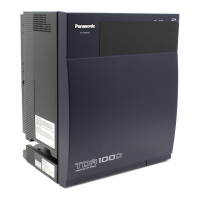
